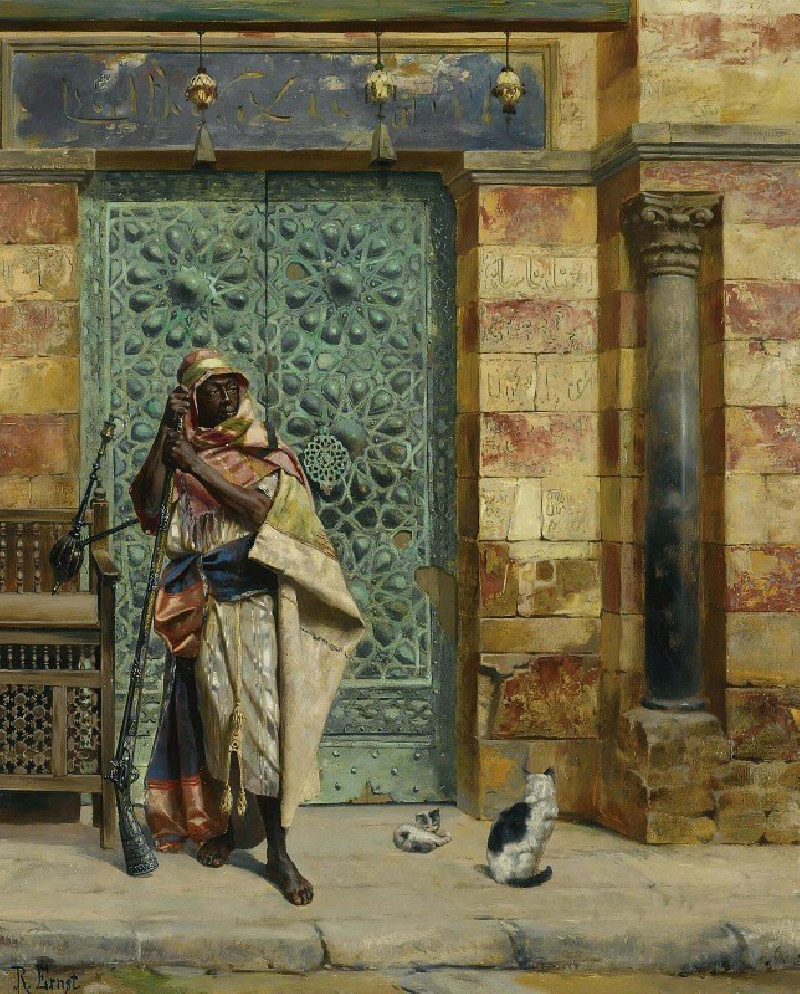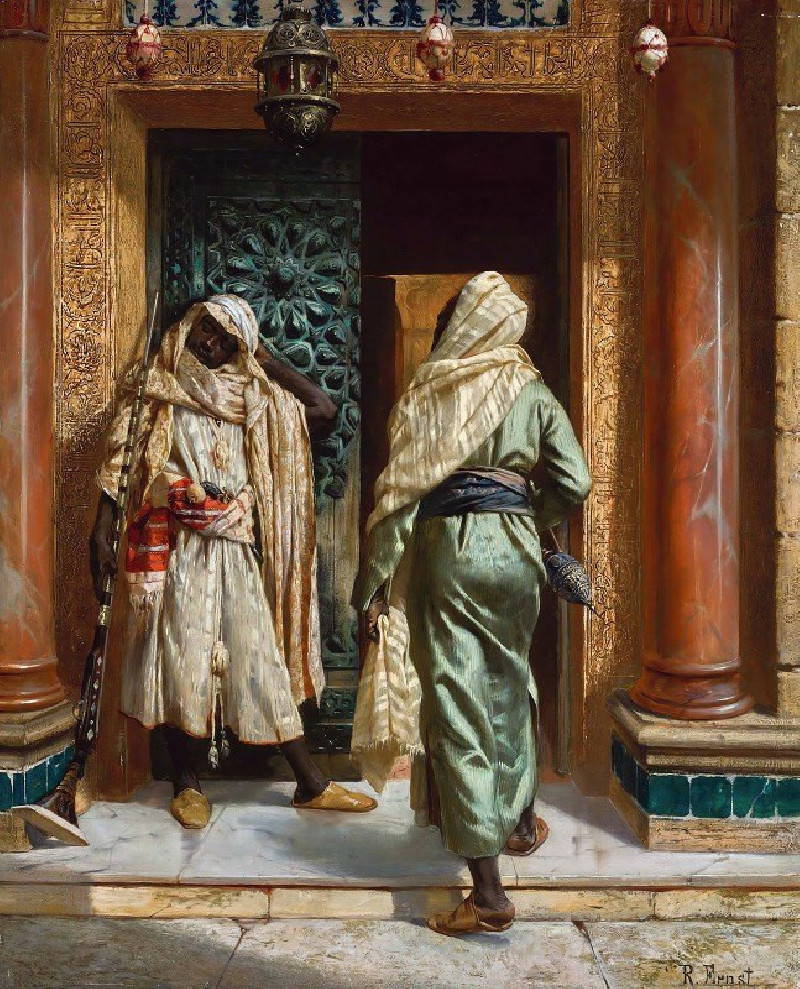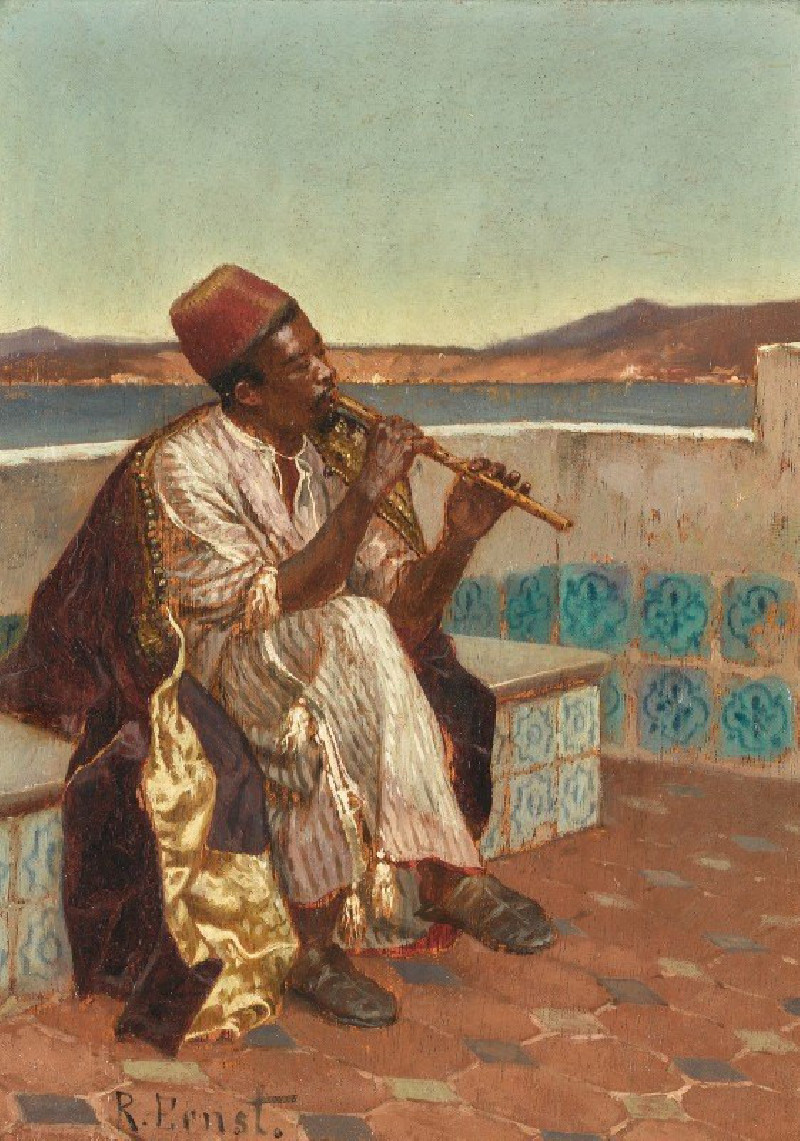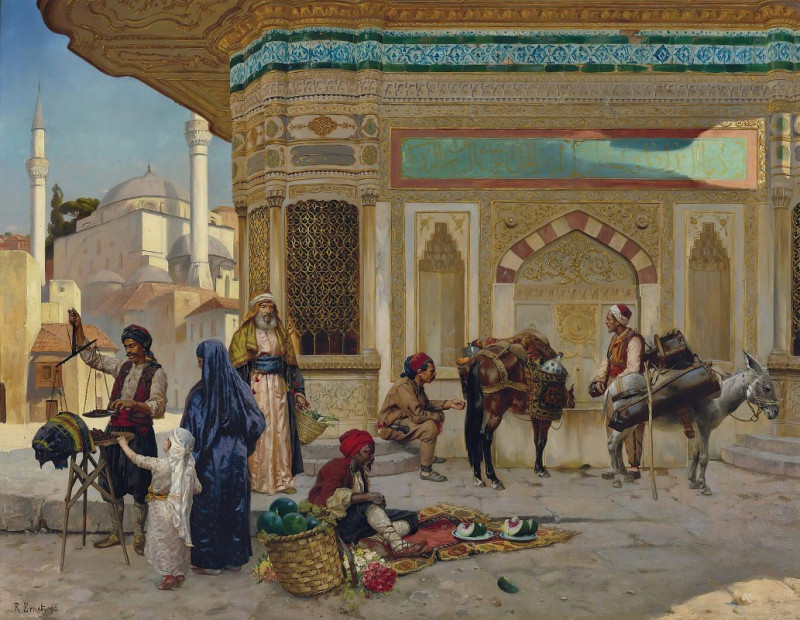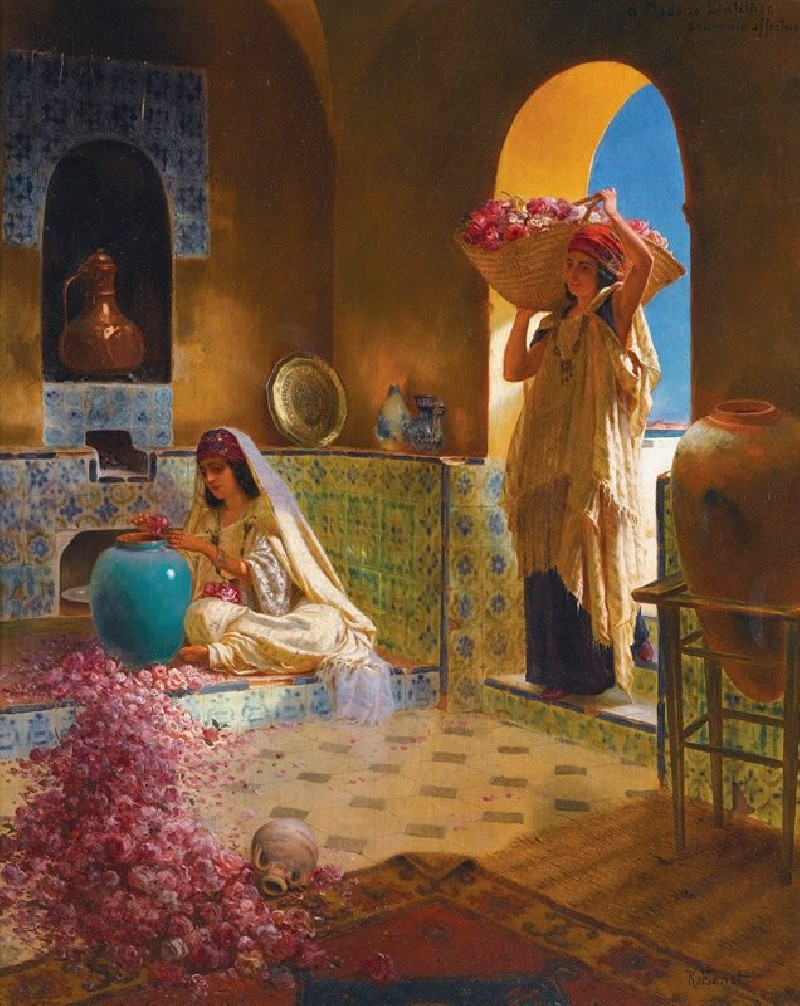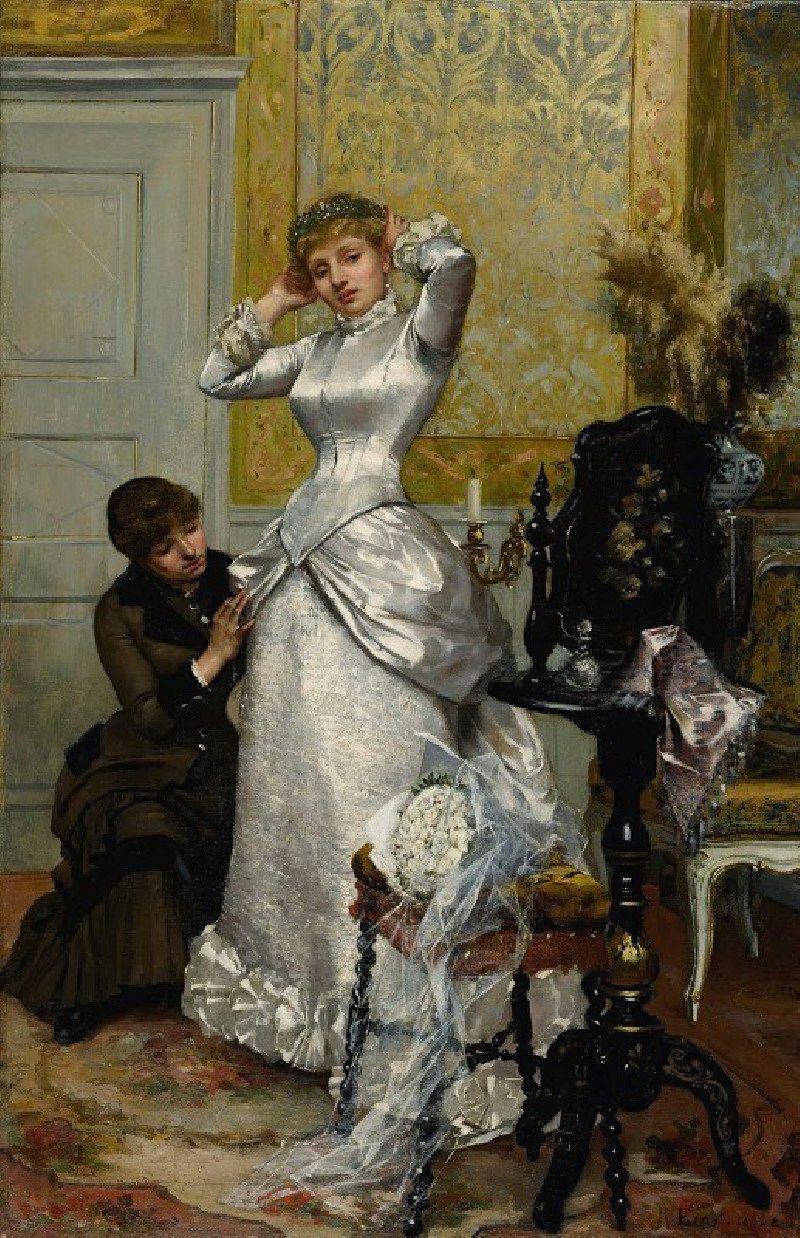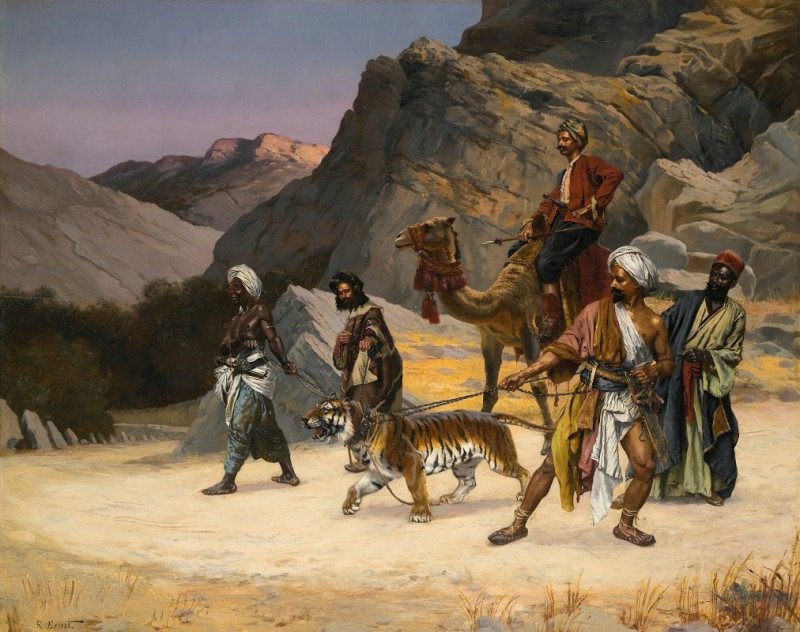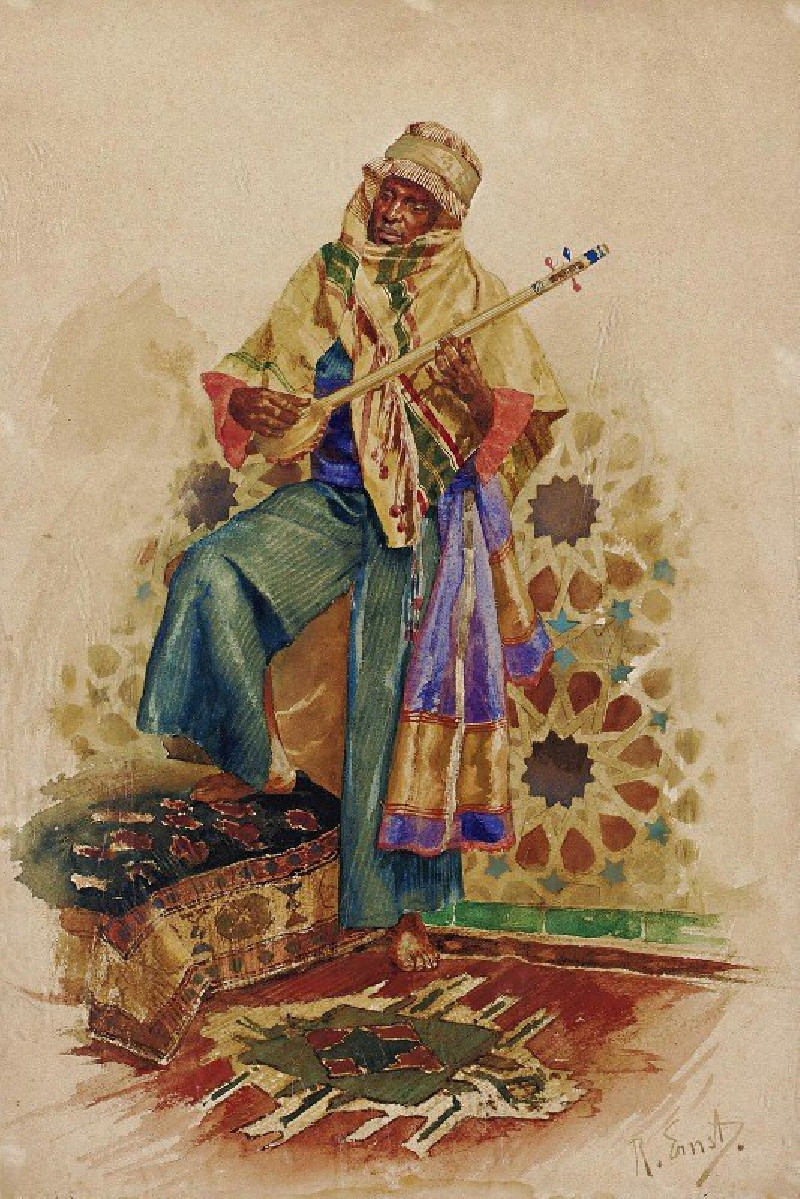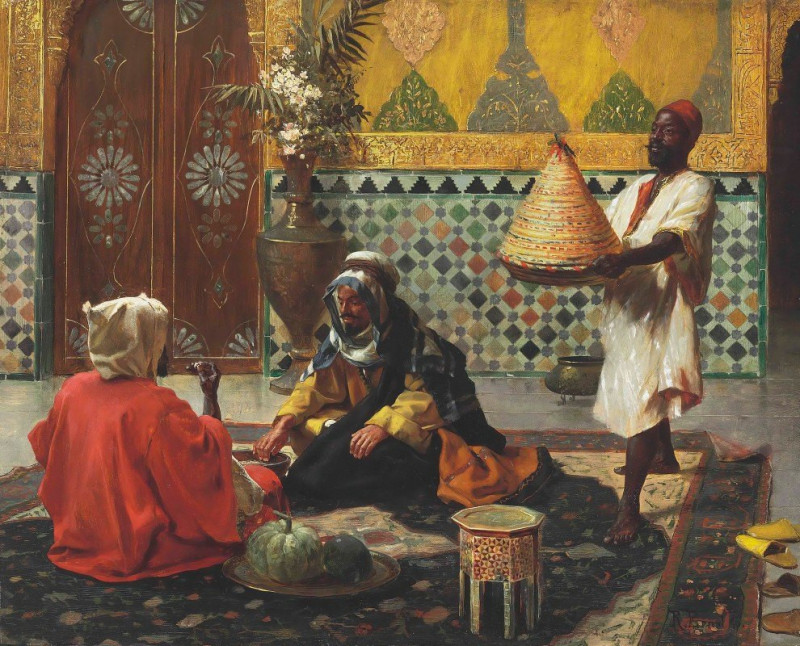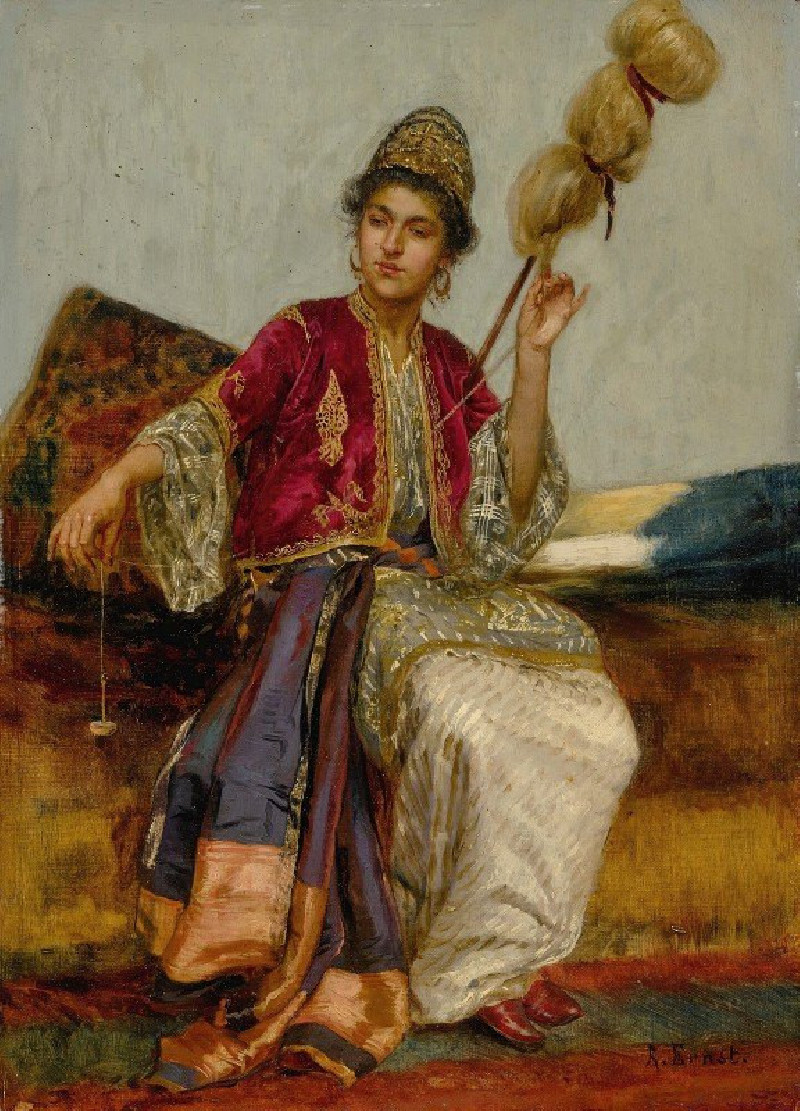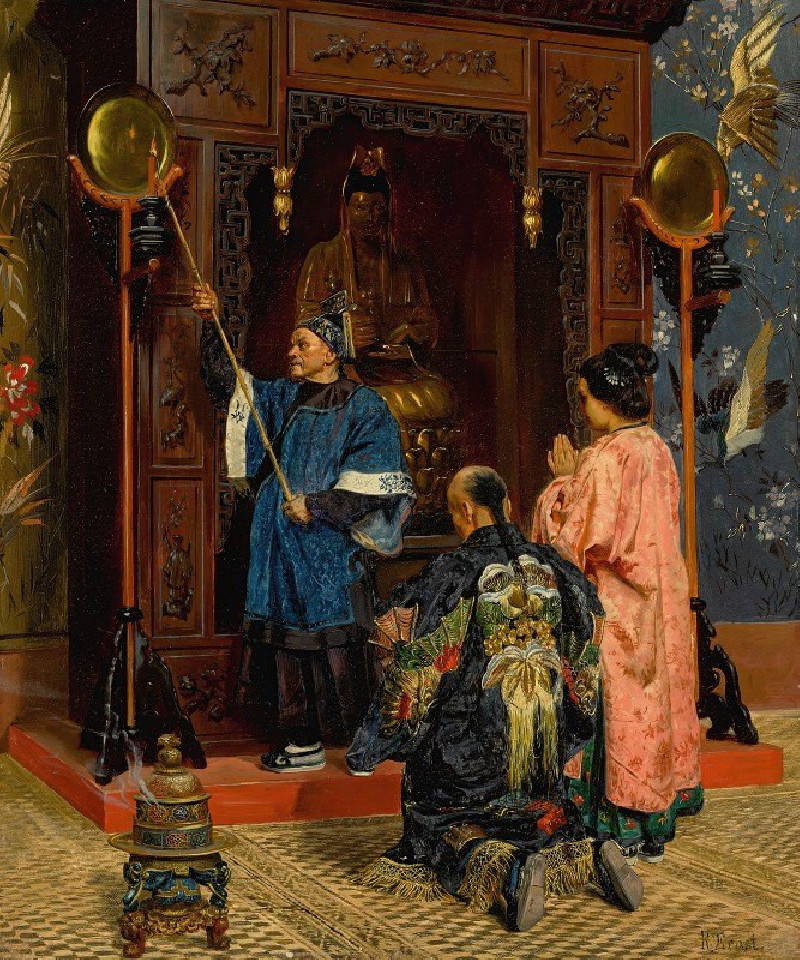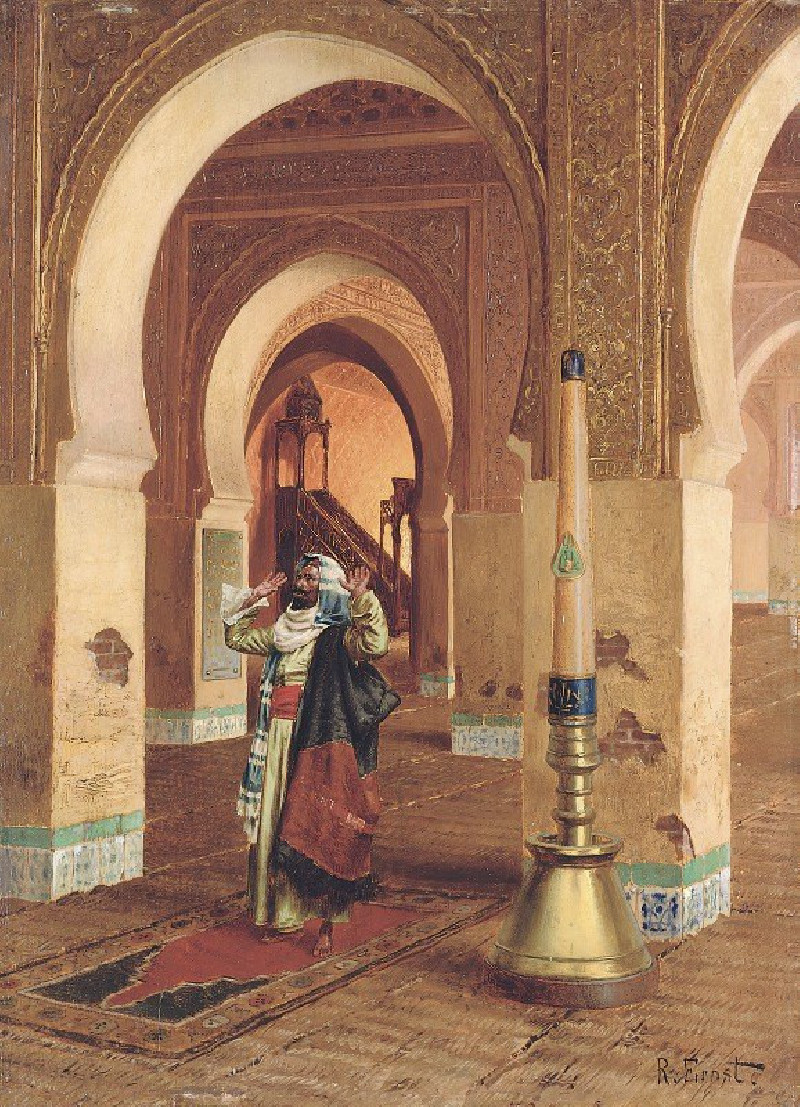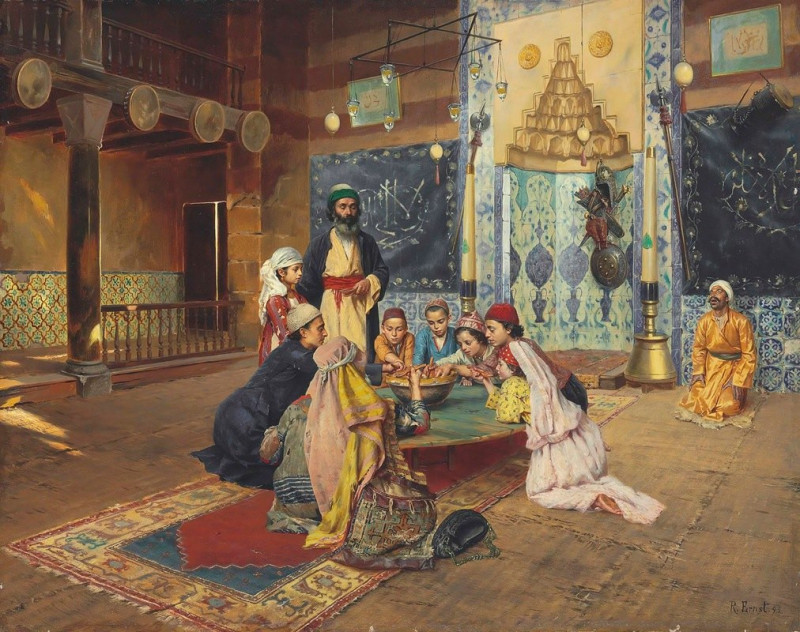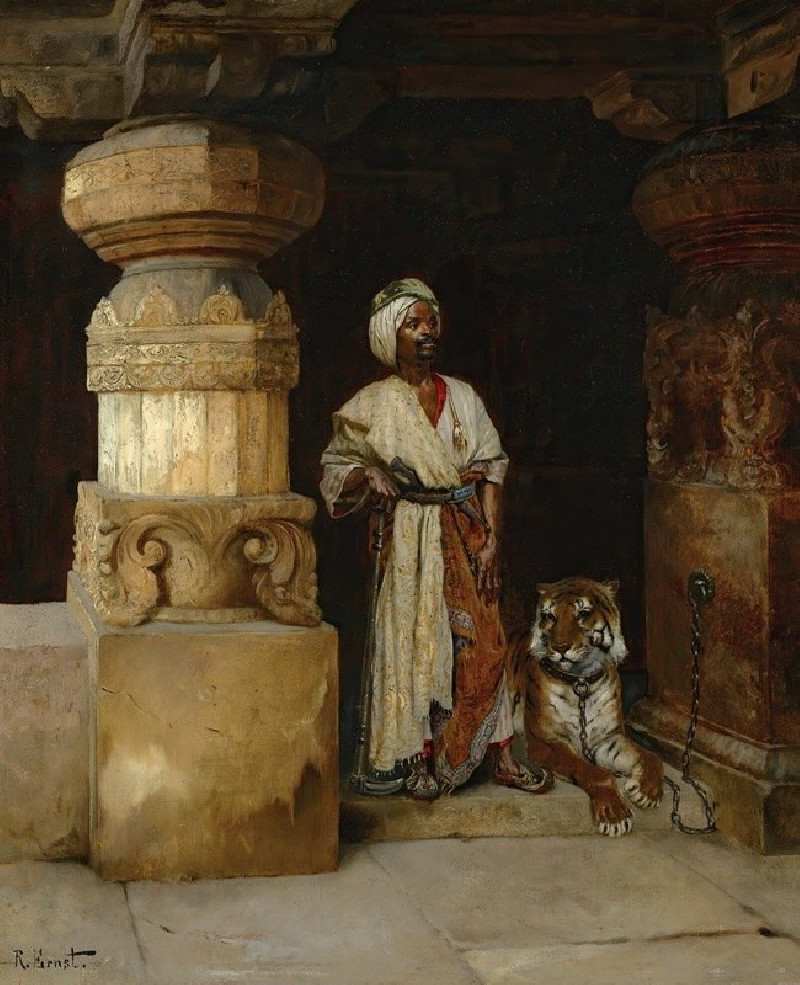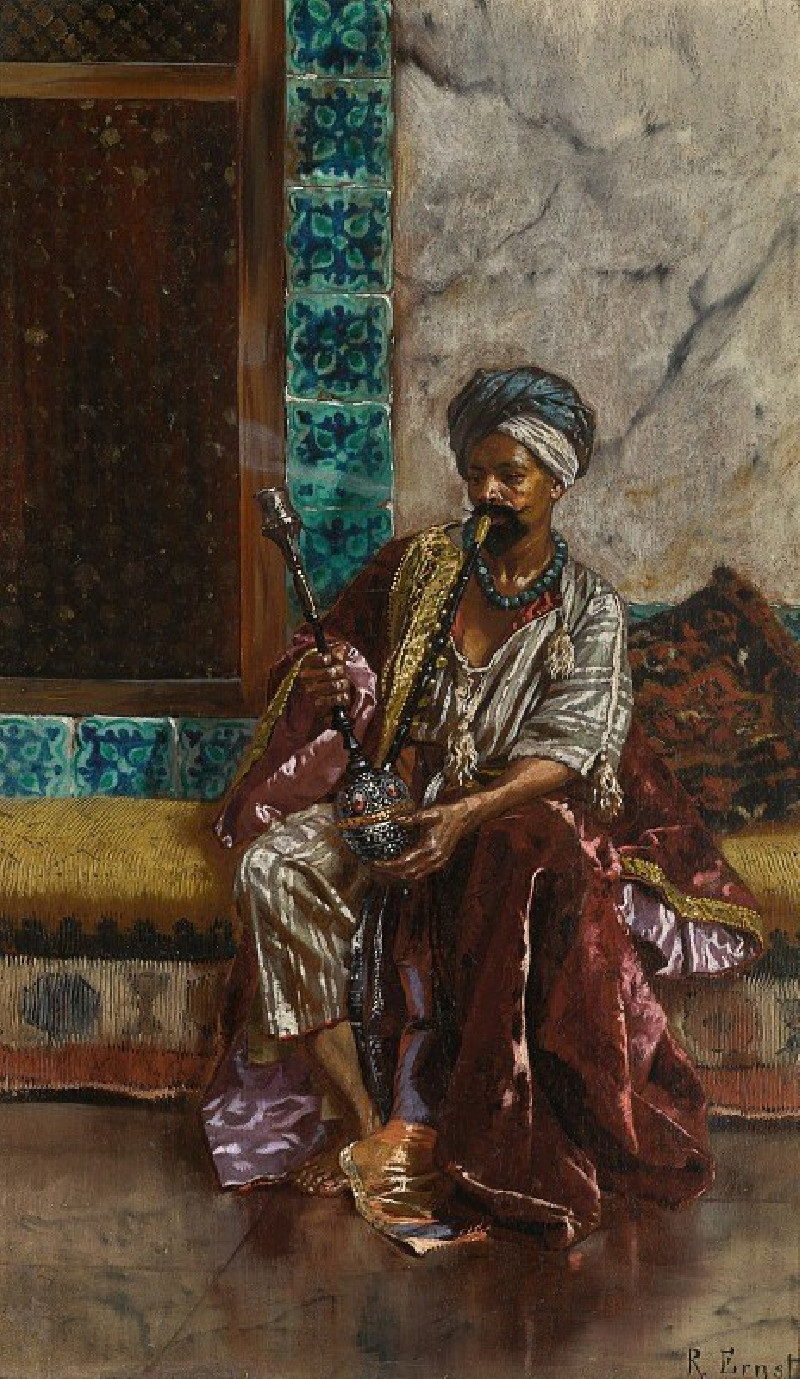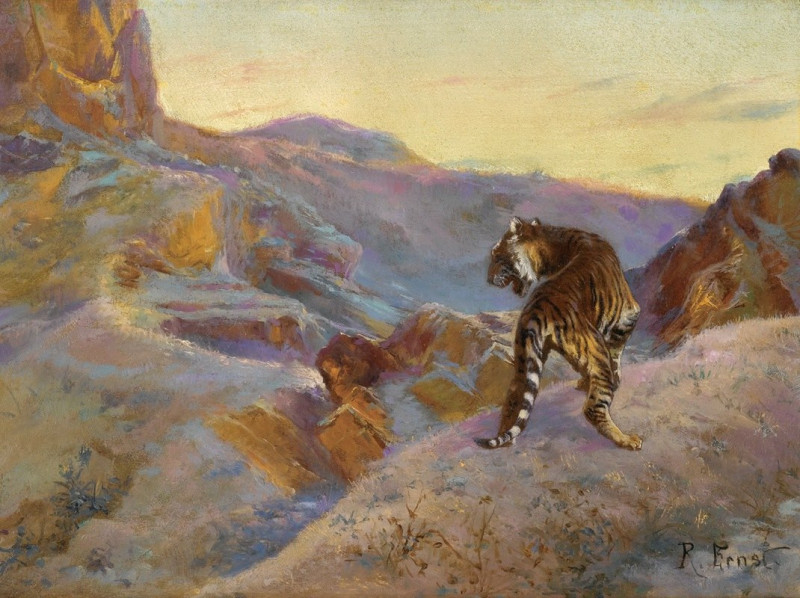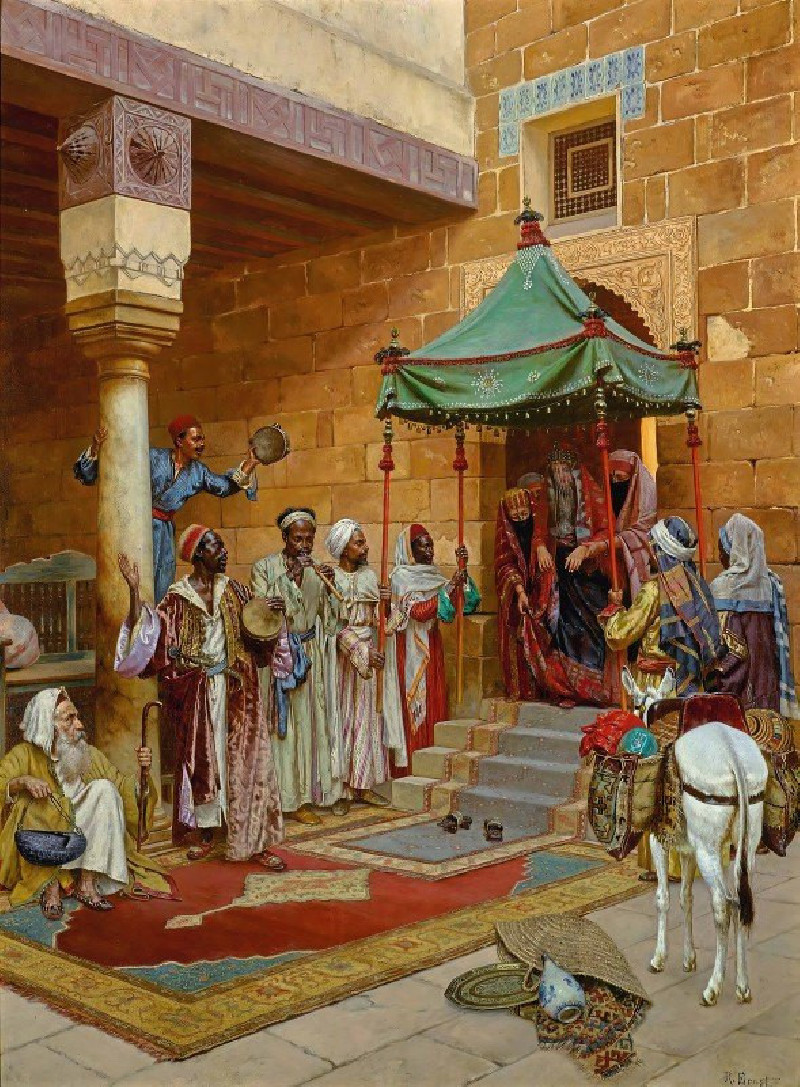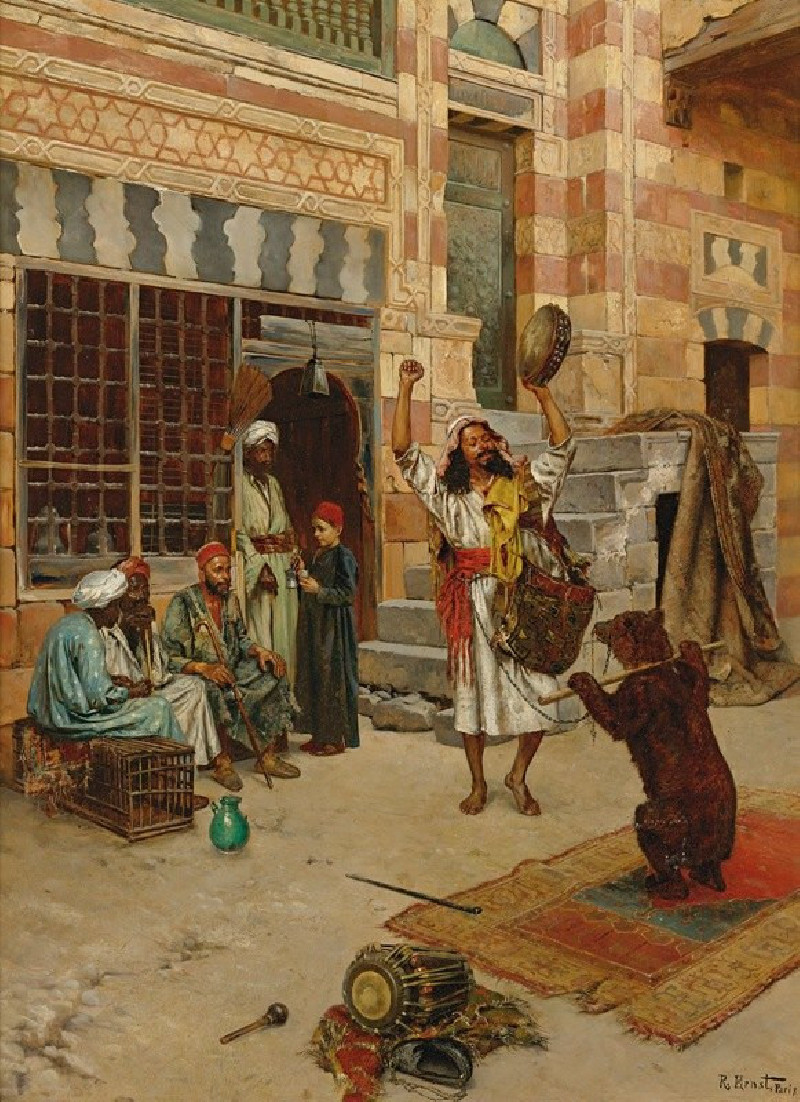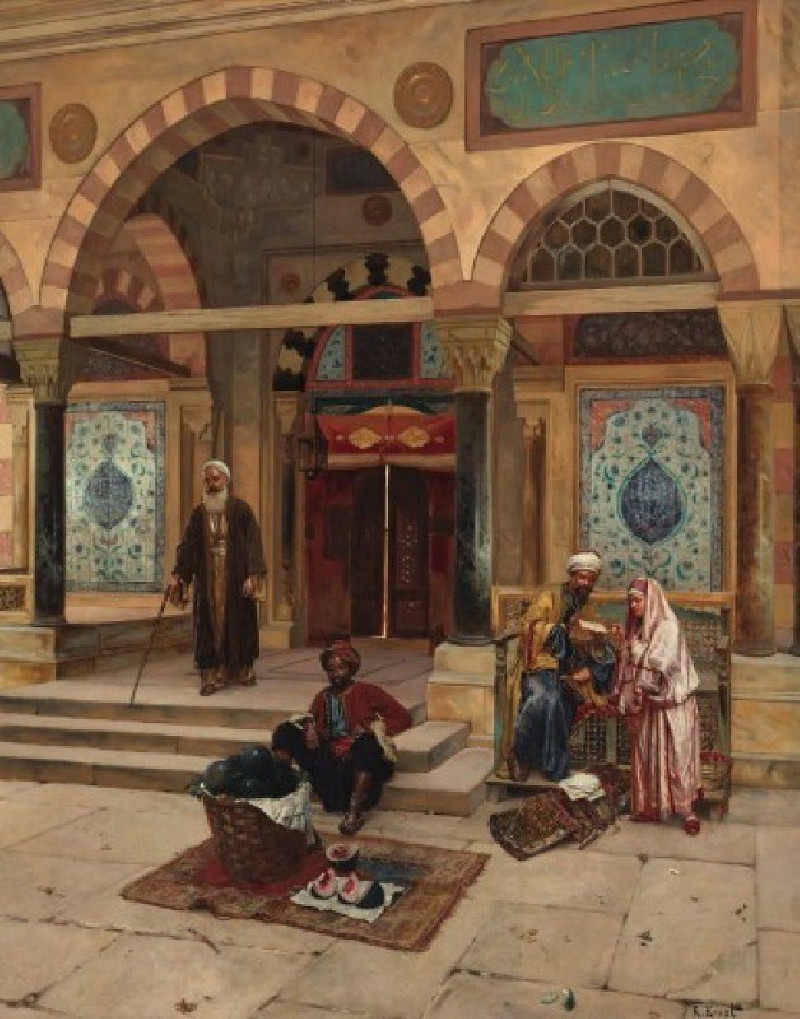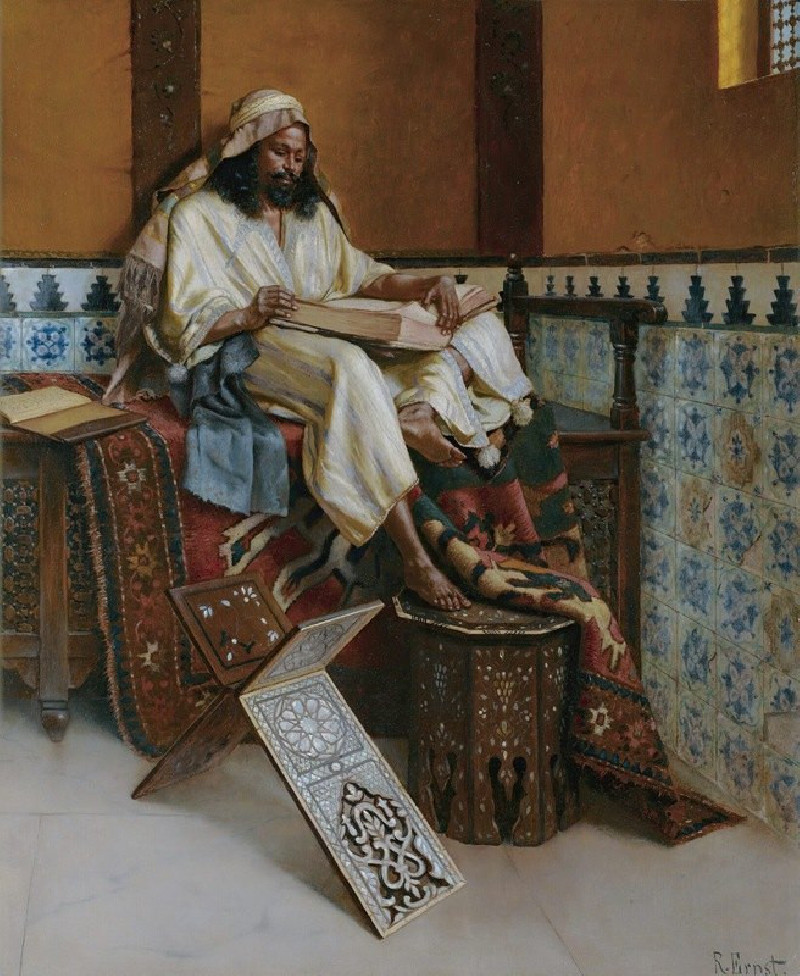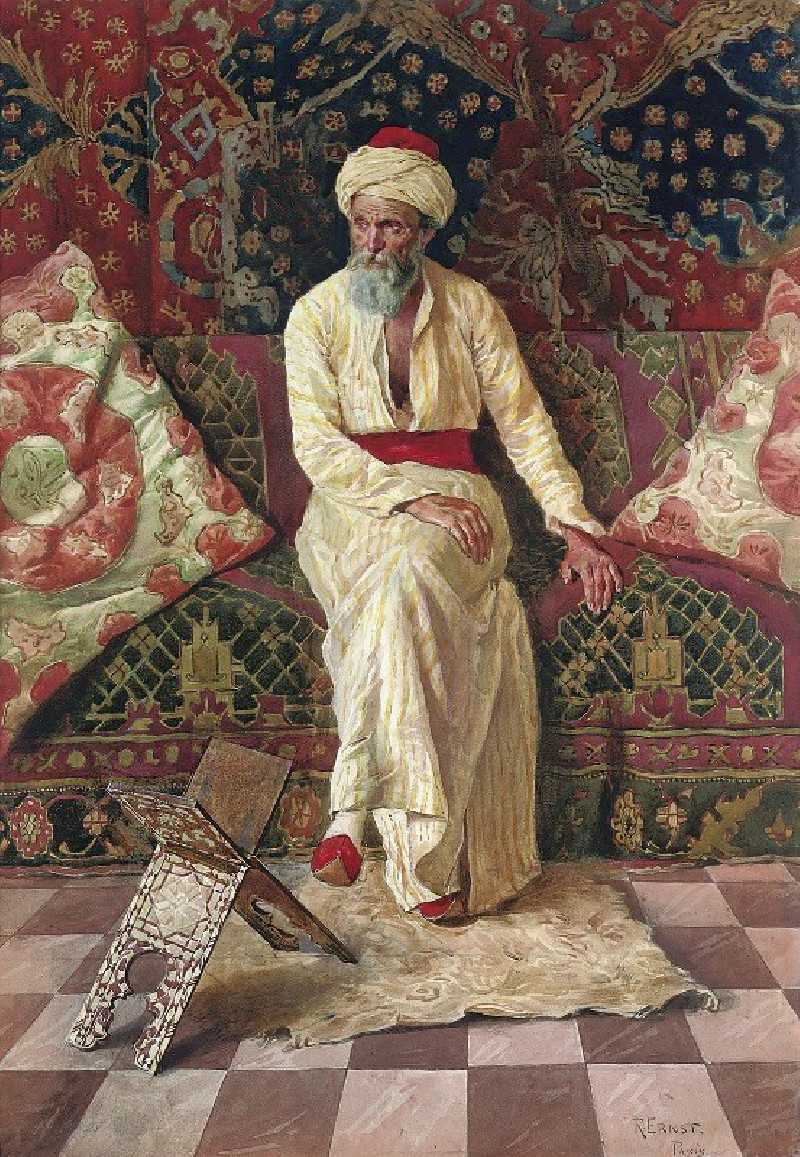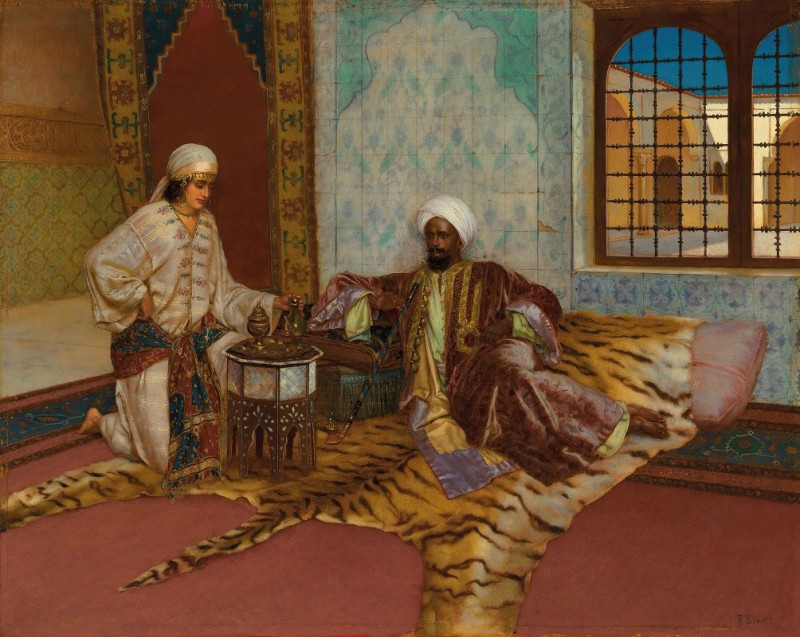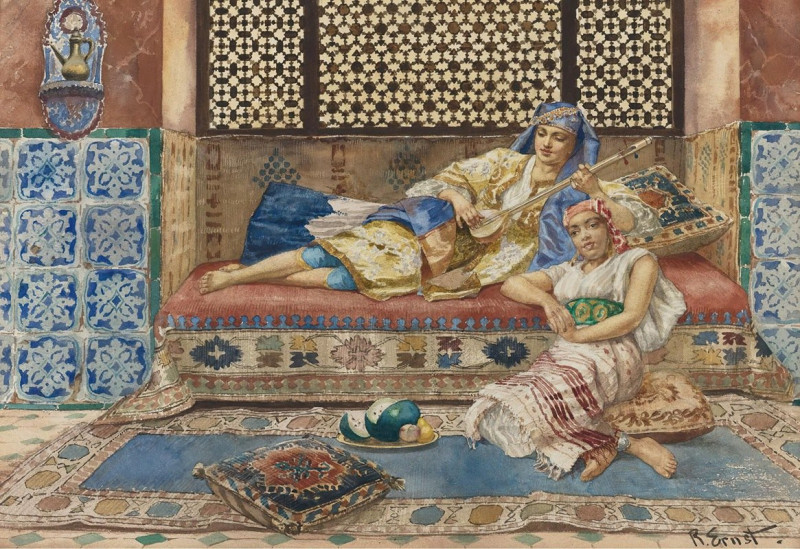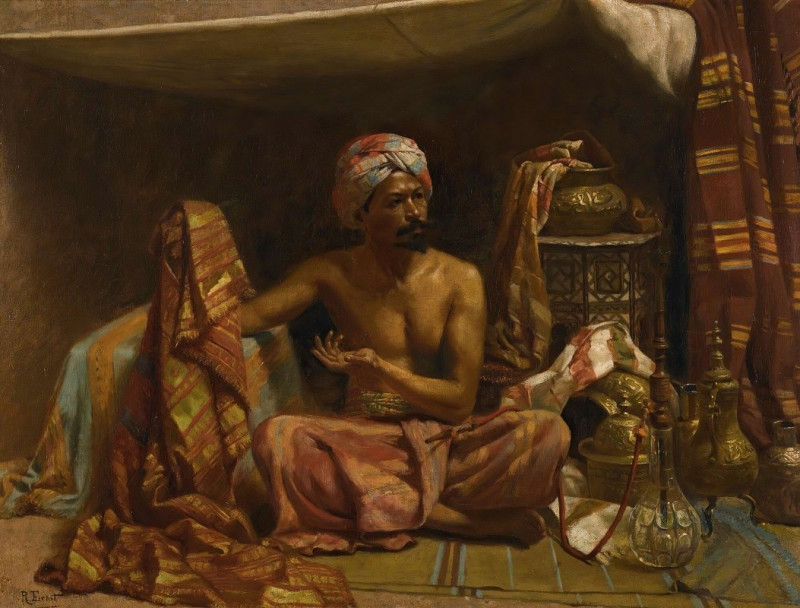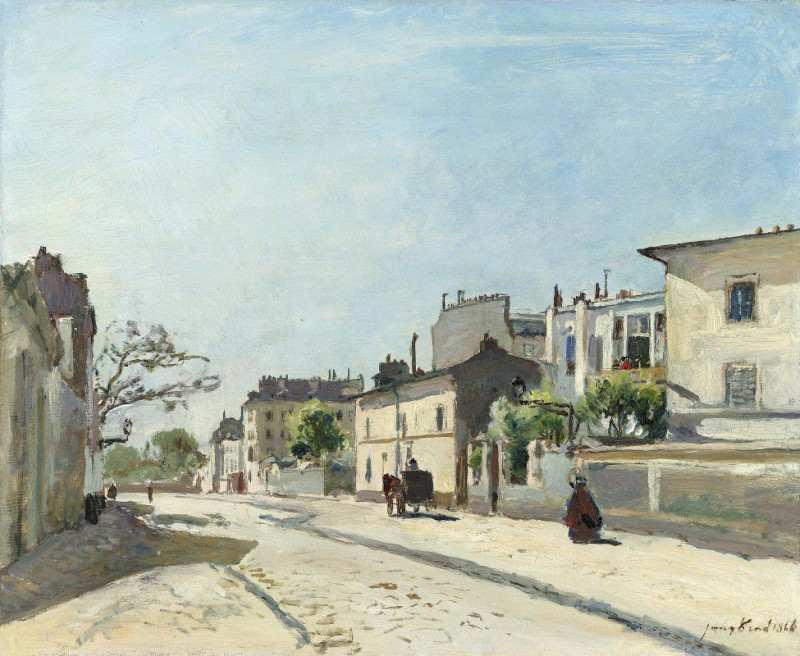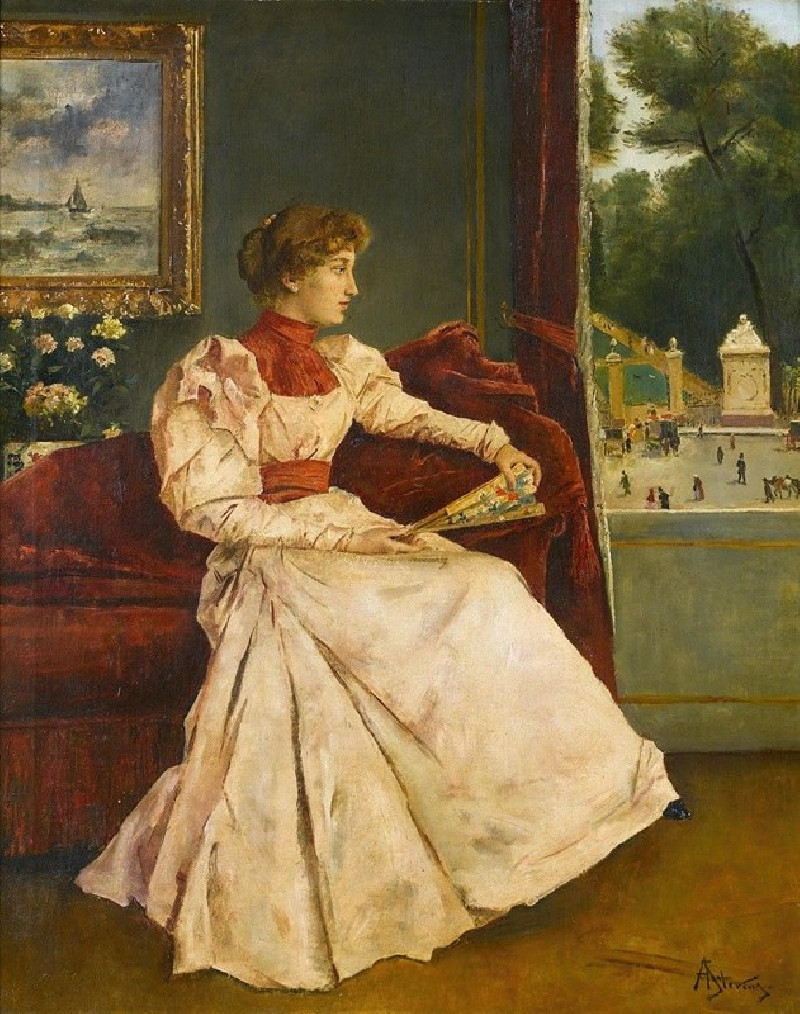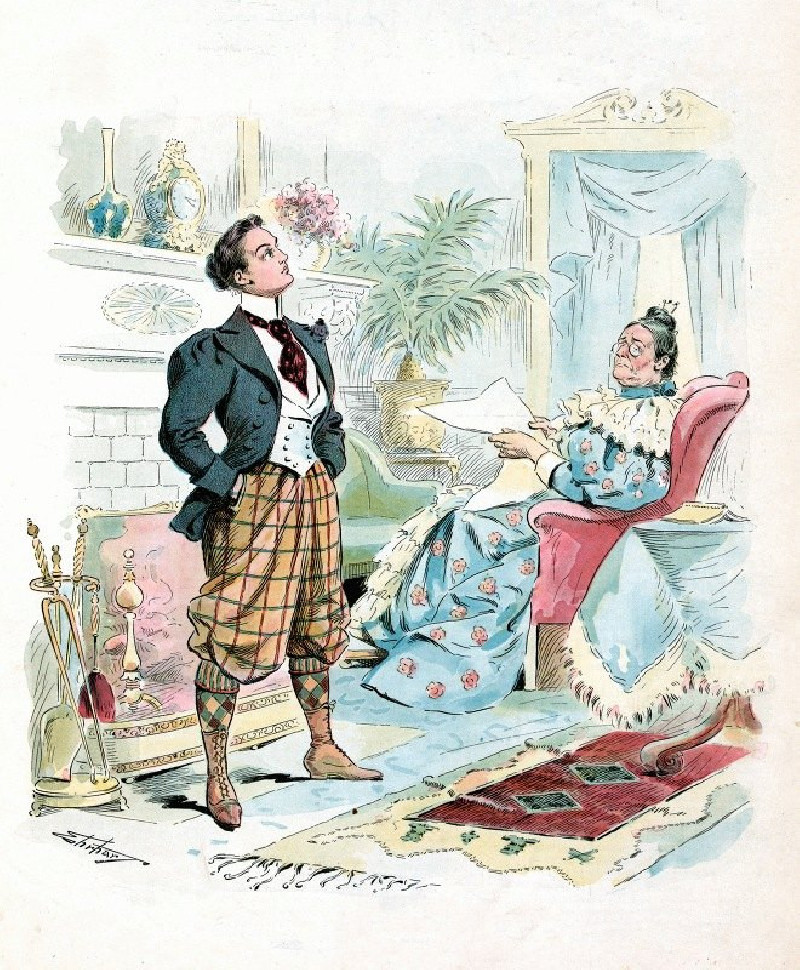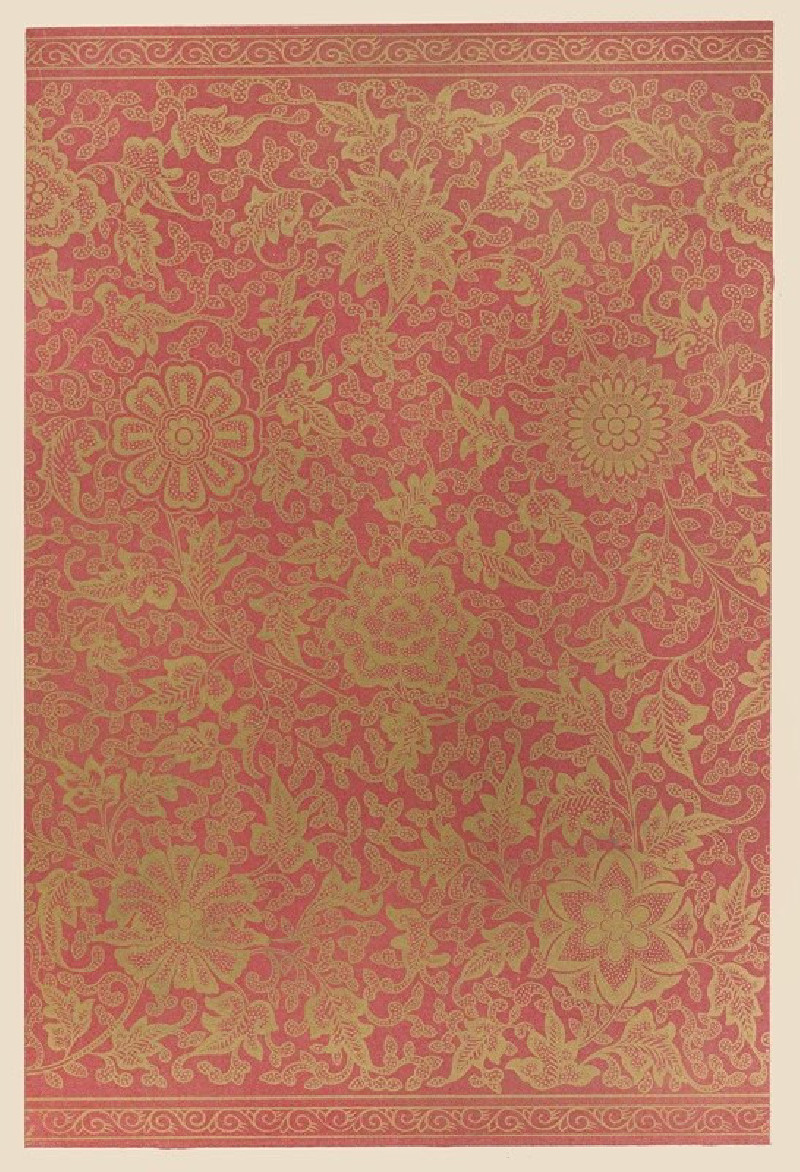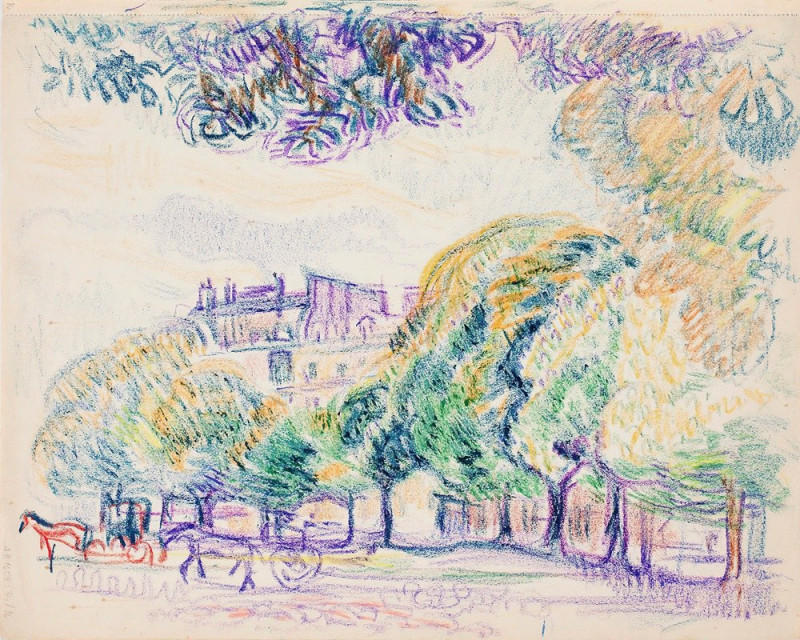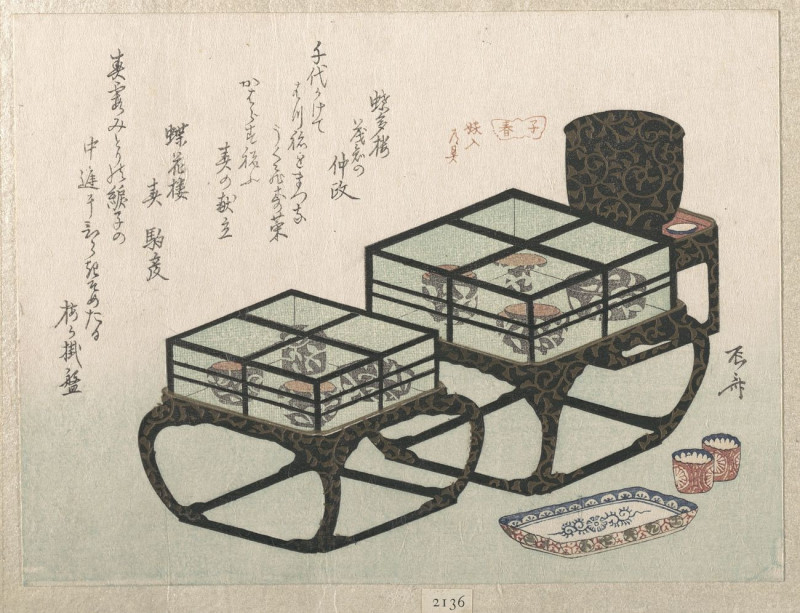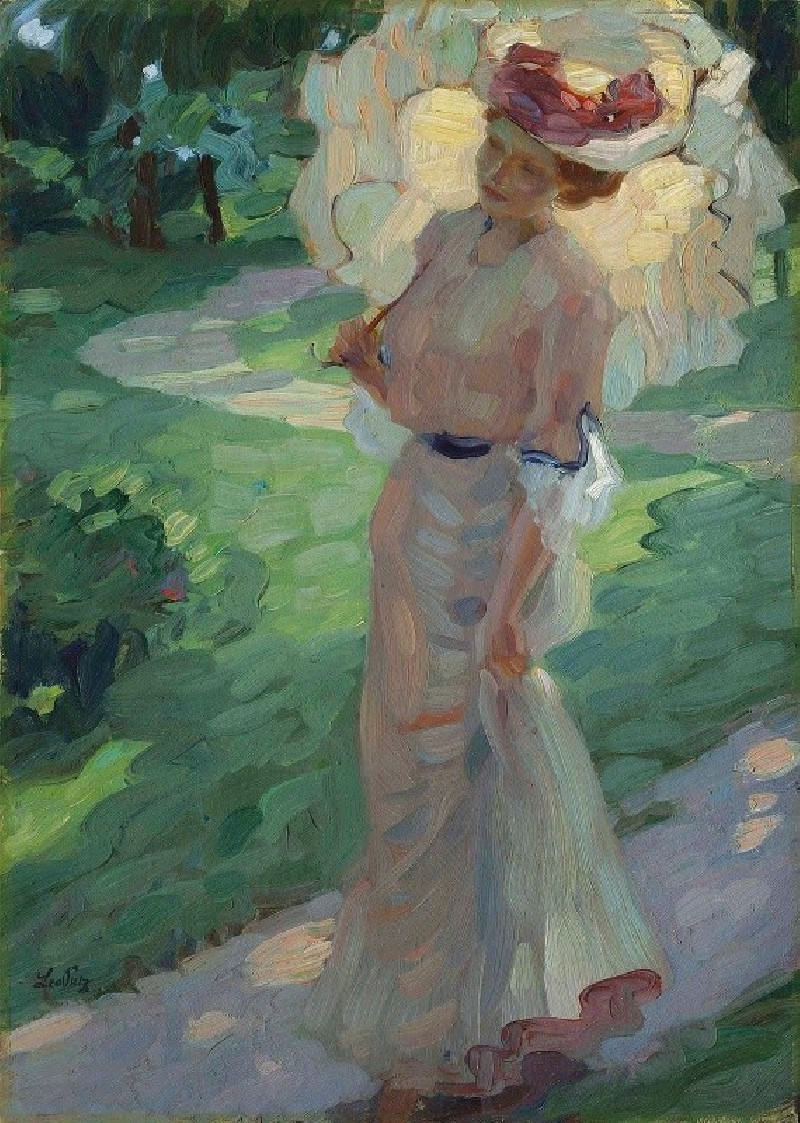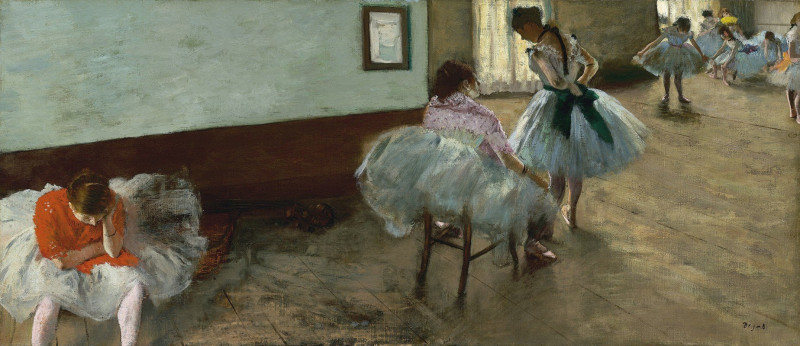The Nubian Guard
Technique: Giclée quality print
Recommended by our customers
More about this artwork
Artist: Rudolf Ernst"The Nubian Guard" by Rudolf Ernst is a striking example of Orientalist art, capturing the exotic allure and rich detail the artist found in the East. This painting is remarkable for its intricate depiction of architecture, attire, and serene atmosphere.Set against a backdrop of a beautifully adorned door, the figure of a Nubian guard stands prominently. The door, with its ornate, blue-patterned design and Arabic inscriptions, tells a story of cultural richness. The guard, clothed in a vibrant ensemble that includes a head wrap, sandals, and a layered robe, holds a rifle, suggesting his role in protection and vigilance. His pose is relaxed yet alert, embodying a quiet strength.By his feet, two kittens play, adding a touch of everyday life and gentleness that contrasts with the guard's duty. The presence of the kittens brings a humanizing element to the scene, highlighting a peaceful moment amidst the responsibilities of guarding.The use of light and shadow in the painting emphasizes the textures of the guard’s garments and the ancient stones of the building. Ernst's attention to detail not only in the clothing and architectural elements but also in the subtle expressions of the guard invites viewers to a deeper understanding of the scene.Rudolf Ernst's work is known for its meticulous detail and vibrant color palette, which are on full display in this painting. "The Nubian Guard" exemplifies Ernst’s skill in creating depth and texture, making the scene come alive while offering a window into a world distant both in space and time.
Delivery
Returns
Rudolf Ernst was an Austro-French painter, printmaker and ceramics painter who is best known for his orientalist motifs. He exhibited in Paris under the name "Rodolphe Ernst".
He was the son of the architect Leopold Ernst and, encouraged by his father, began studies at the Academy of Fine Arts Vienna at the age of fifteen. He spent some time in Rome, copying the old masters, and continued his lessons in Vienna with August Eisenmenger and Anselm Feuerbach.

